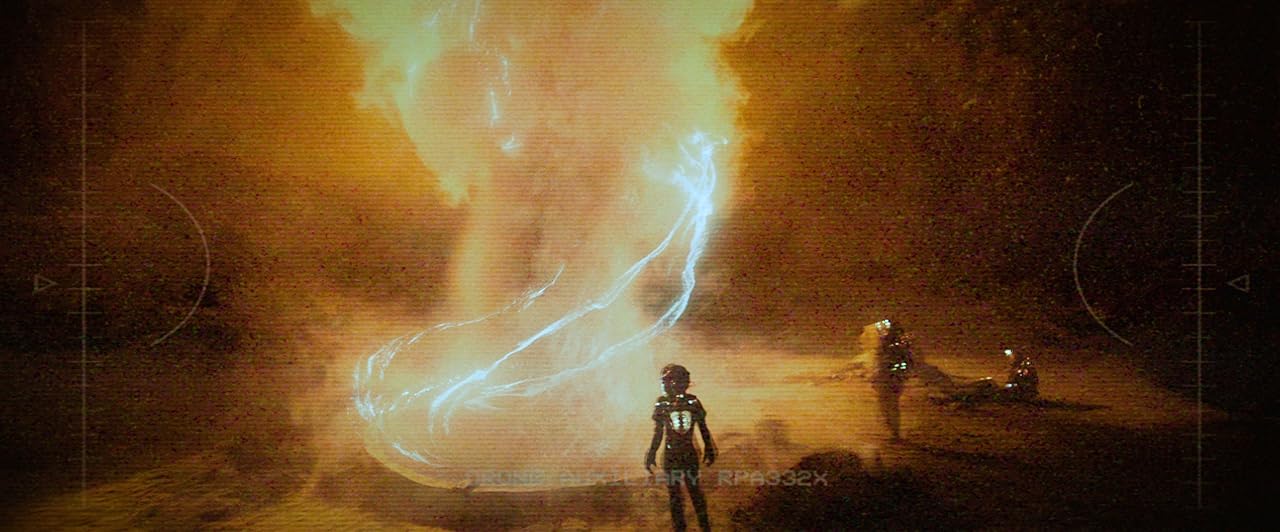Ash
Ash is the vision of a filmmaker reared on the hectic images of music videos. The ambition gets swallowed by its derivativeness.

If there is a new trapped-in-space horror film, I’ll be in. Most of them aren’t good and that’s okay. They just scratch a certain itch that needs periodically scratched. But if you stick Eiza González, Aaron Paul, and Iko Uwais in space and put the camera in the hands of a multi-modal artist and genre-bending electronic musician named Flying Lotus, then my guard will be left down and there’s nothing that I can do to resist.
That’s what I thought, at least. Flying Lotus unloads an arsenal of images (and sounds) lodged in his head that he puts on the screen. Monochromatic blues and reds wash almost every scene, and his low-fi leaning music almost circles itself as it adds new elements to sonically interpret the unfolding of the central mystery. No one would accuse Ash of being under-directed. As if he assumed there would never be another opportunity to realize his hodge-podge of visuals, nothing was left on the cutting-room floor. Technological chaos, utopic dreams imagining González as a tribal princess, and hypnotic space spirals all co-exist with exploding faces and x-ray aestheticized space suits. There is something entertaining about that maximalist push: I always prefer an artistically ambitious failure to a miserably safe one. It also adds up to a series of disparate threads that never tie fully together. Ash is the vision of a filmmaker reared on the hectic images of music videos. The ambition gets swallowed by its derivativeness.

González, playing the designated survivor named Riya, carries her first English-language top-bill role with great pride. A lesser screen presence may have resulted in something unwatchable. She pieces together the bloody state of her spaceship after waking up with no memories and so much of Ash depends on her ability to compel the camera through psychotic breakdowns and conversations with Brion (Aaron Paul), a more distant member of the crew who stayed in orbit on another station to maintain a line of contact with Earth. They are slim on air and need to rendezvous with the orbital facility in the next 12 hours or they face certain death. This gives Riya a ticking clock to finish her puzzle. What killed the rest of the crew? Did she? Where is missing member Clarke (Kate Elliott)? Can she trust Brion? Why was her crew on the “barren” K.O.I.-442 in the first place?
The good ideas of Ash lose themselves in the minds of its forebearers. The films of Paul WS Anderson evidently shape the director significantly. The generic trapped-in-space horror recalls Event Horizon, and so do some of the specific twists and gore-filled kill shots. The monstrous face-horror, in particular, is difficult to imagine in isolation from Anderon’s Horizon. The latter’s Resident Evil plays an even bigger part in the library Flying Lotus pulls from. Riya’s blank slate memory pulls a trick from Milla Jovovich’s Alice in the first film, a trick that makes her a seamless audience surrogate, and the musician-turned-director hasn’t shied from referencing the film on the publicity tour. To her credit, González gives a very different and still entertaining performance than Jovovich’s more stoic action inclinations. That’s not the most obvious reference, though. Its fundamental appeal is its similarity to the Alien franchise, a similarity that weighs heavily on the third act. For a moment, in an anti-colonial extraterrestrial monologue, Ash looks as if it will depart the worst and most obvious of the Alien tropes, but it takes these strands nowhere before pivoting back to the usual parasitical nonsense of the Alien films.